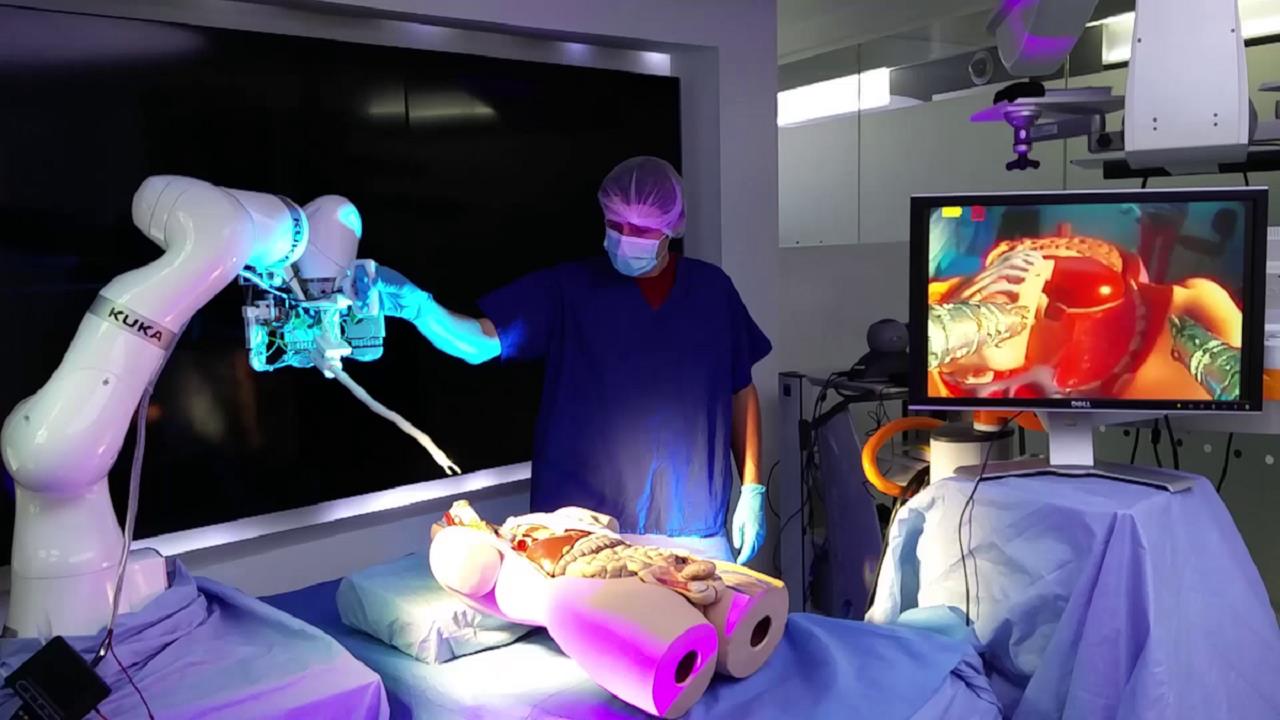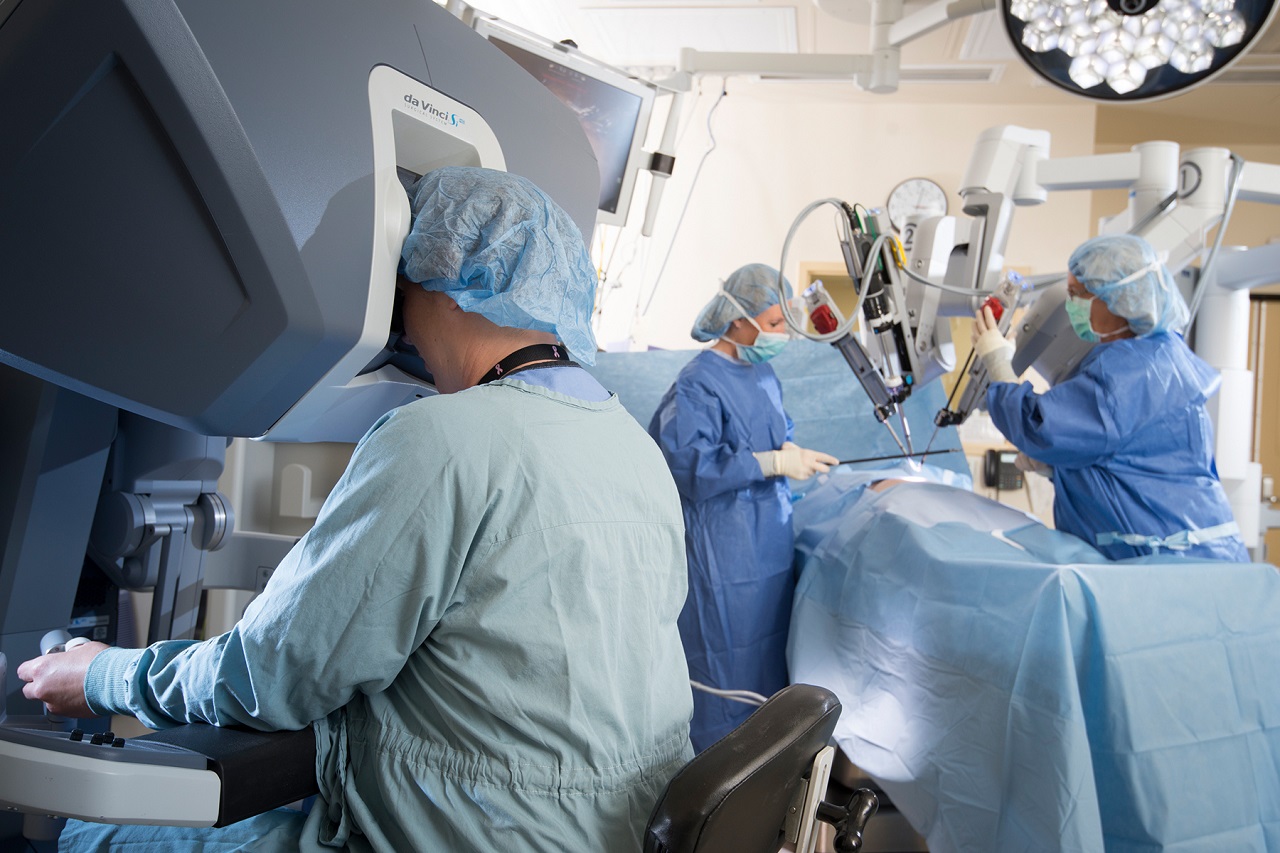
In the rapidly advancing field of healthcare, robotic surgery has emerged as a cutting-edge technology that is revolutionizing surgical procedures.
This comprehensive blog aims to delve into the intricacies of robotic surgical systems, explore the advancements in minimally invasive robotic surgery, highlight the benefits of robot-assisted surgical procedures, examine real-world examples of surgical robotics in practice, and discuss the future prospects of this remarkable field.
By providing accurate and concise information, this article aims to inform and educate readers about the exciting world of robotic surgery.
Key Takeaways
- Robotic surgical systems have revolutionized surgery by providing increased precision, flexibility, and control.
- Minimally invasive robotic surgery has advanced surgical procedures, allowing for greater precision and efficiency, reduced risk of complications and infections, shorter hospital stays, and faster recovery times.
- Robot-assisted surgical procedures offer benefits such as improved surgical precision and accuracy, enhanced visualization with high-definition 3D imaging, reduced trauma with smaller incisions, faster recovery, and improved safety by eliminating human error.
- Real-world applications of surgical robotics include urology, gynecology, and cardiothoracic surgery, with successful outcomes in procedures such as prostatectomies, kidney surgeries, complex gynecological procedures, mitral valve repair, and coronary artery bypass grafting.
The Evolution of Robotic Surgical Systems
The evolution of robotic surgical systems has revolutionized the field of surgery by allowing for increased precision, flexibility, and control during minimally invasive procedures.
Over the years, there have been significant innovations in this field. The early beginnings of robotic surgery can be traced back to the 1980s when researchers started experimenting with telemanipulator technology. This allowed surgeons to remotely control robotic arms equipped with surgical tools.
As technology advanced, more sophisticated systems were developed, incorporating features like three-dimensional visualization and enhanced dexterity. Today, modern robotic surgical systems enable surgeons to perform complex procedures with greater accuracy and smaller incisions compared to traditional open surgery.
These systems utilize a combination of robotics, computer-assisted navigation, and real-time imaging to provide an optimal surgical experience for both patients and surgeons alike.
The continuous evolution of these systems holds great promise for the future of surgery by improving patient outcomes and expanding treatment options.
Advancements in Minimally Invasive Robotic Surgery
Advancements in minimally invasive robotic surgery have revolutionized the field of surgical procedures. These advancements have made it possible for surgeons to perform complex surgeries with greater precision and efficiency, while minimizing trauma to the patient's body. One key benefit of minimally invasive robotic surgery is the reduced risk of complications and infections, as smaller incisions are made and there is less tissue damage. Additionally, patients experience shorter hospital stays and faster recovery times compared to traditional open surgeries.
The use of robotic systems in surgery has allowed for improved visualization, enhanced dexterity, and better control during procedures. Surgeons can now operate with greater accuracy using robotic arms that mimic their hand movements with high precision. This enables them to perform intricate tasks that were previously challenging or impossible.
Real-world examples of minimally invasive robotic surgery include prostatectomies, hysterectomies, and cardiac bypass surgeries. In these procedures, robots assist surgeons by providing a 3D visualization of the surgical site and precise tools for performing delicate manipulations.
In conclusion, advancements in minimally invasive robotic surgery have brought numerous benefits to both surgeons and patients alike. These innovations continue to push the boundaries of what is possible in surgical procedures, leading to improved outcomes and quality of life for patients.
The Benefits of Robot-Assisted Surgical Procedures
One significant advantage of utilizing robot-assisted procedures in surgery is the potential for improved surgical precision and accuracy. This technological advancement allows surgeons to perform complex procedures with enhanced control, leading to better patient outcomes.
The benefits of robot-assisted surgical procedures include:
Enhanced visualization: Robotic systems provide high-definition, 3D imaging that allows surgeons to see anatomical structures with greater clarity. This improves their ability to identify critical areas and perform precise maneuvers.
Reduced trauma: Robot-assisted surgery often involves smaller incisions compared to traditional open surgeries. This results in less tissue damage, reduced blood loss, and a decreased risk of infection.
Faster recovery: Minimally invasive robotic procedures typically lead to shorter hospital stays and faster recovery times for patients.
Improved safety: The use of robots eliminates the possibility of human error during delicate surgical tasks, ensuring consistent and accurate movements throughout the procedure.
Overall, robot-assisted surgical procedures offer numerous advantages that contribute to improved patient outcomes and satisfaction.
Real-World Applications of Surgical Robotics
Applications of surgical robotics can be found in various medical specialties, such as urology, gynecology, and cardiothoracic surgery. In urology, robotic systems are used for prostatectomies and kidney surgeries with enhanced precision and minimal invasiveness.
Gynecological procedures like hysterectomies and myomectomies have also benefited from robot-assisted surgery, allowing surgeons to perform complex operations more accurately.

In cardiothoracic surgery, robotic systems assist in procedures like mitral valve repair or coronary artery bypass grafting. These applications of robotic surgery offer several advantages over traditional open surgeries, including reduced blood loss, shorter hospital stays, faster recovery times, and smaller incisions leading to less scarring.
Real-world examples highlight the success of surgical robotics in practice. For instance, the da Vinci Surgical System is widely used across different specialties and has revolutionized the field by enabling precise maneuvers with its advanced instruments and intuitive controls.
The Future of Robotic Surgery
The future of robotic surgery is characterized by ongoing research and development aimed at enhancing the capabilities of surgical robots, improving patient outcomes, and expanding the range of procedures that can be performed using these systems.
As technology continues to advance, there are several challenges that need to be addressed in order to fully implement robotic surgery. These challenges include the high cost of acquiring and maintaining robotic systems, the need for specialized training for surgeons, and ensuring patient safety during procedures.
Ethical considerations also play a significant role in the use of surgical robotics. Questions arise regarding the responsibility and accountability of surgeons when operating with robotic assistance. Additionally, issues related to informed consent, privacy concerns with patient data collected during surgeries, and potential job displacement for surgical staff must be carefully considered.
Despite these challenges, the benefits of robotic surgery cannot be ignored. It offers improved precision, smaller incisions leading to reduced pain and scarring for patients, shorter hospital stays, and faster recovery times. Furthermore, as research continues to progress in this field, it is expected that more complex procedures will become feasible using robotic systems.
In summary, while there are challenges associated with implementing robotic surgery and ethical considerations that need to be addressed, the future holds great promise for this field. With ongoing advancements in technology and further research into its application in various surgical specialties, we can expect even greater benefits for patients undergoing robot-assisted procedures.
Frequently Asked Questions
How do robotic surgical systems ensure precision and accuracy during procedures?
Robotic surgical systems ensure precision and accuracy during procedures through advancements and future prospects. Artificial intelligence plays a crucial role in enhancing robotic surgical systems, enabling improved navigation, imaging, and automation for enhanced outcomes and patient safety.
Are there any risks or complications associated with minimally invasive robotic surgery?
Risks and complications associated with minimally invasive robotic surgery include potential injury to surrounding tissues, bleeding, infection, and anesthesia-related complications. However, these risks are generally low and can be minimized with proper surgical technique and patient selection.
Robot-assisted surgical procedures have expanded to various types of surgery, including urologic, gynecologic, and gastrointestinal surgeries. Potential future advancements may enable robot assistance in more complex procedures and specialties.
What are some of the limitations or challenges faced by surgeons when using robotic surgical systems?
Limitations and challenges faced by surgeons when using robotic surgical systems include the high cost of equipment, longer setup time, lack of tactile feedback, limited dexterity, and the need for specialized training.
How do surgical robotics benefit patients in terms of recovery time and post-operative care?
Robotic surgery offers several benefits to patients in terms of recovery time and post-operative care. The advantages of minimally invasive robotic surgery include reduced pain, shorter hospital stays, faster healing, smaller incisions, less scarring, and decreased risk of infection.
 GadgetsProduct ReviewsSmart DevicesDronesVirtual DevicesPrivacy PolicyTerms And Conditions
GadgetsProduct ReviewsSmart DevicesDronesVirtual DevicesPrivacy PolicyTerms And Conditions
